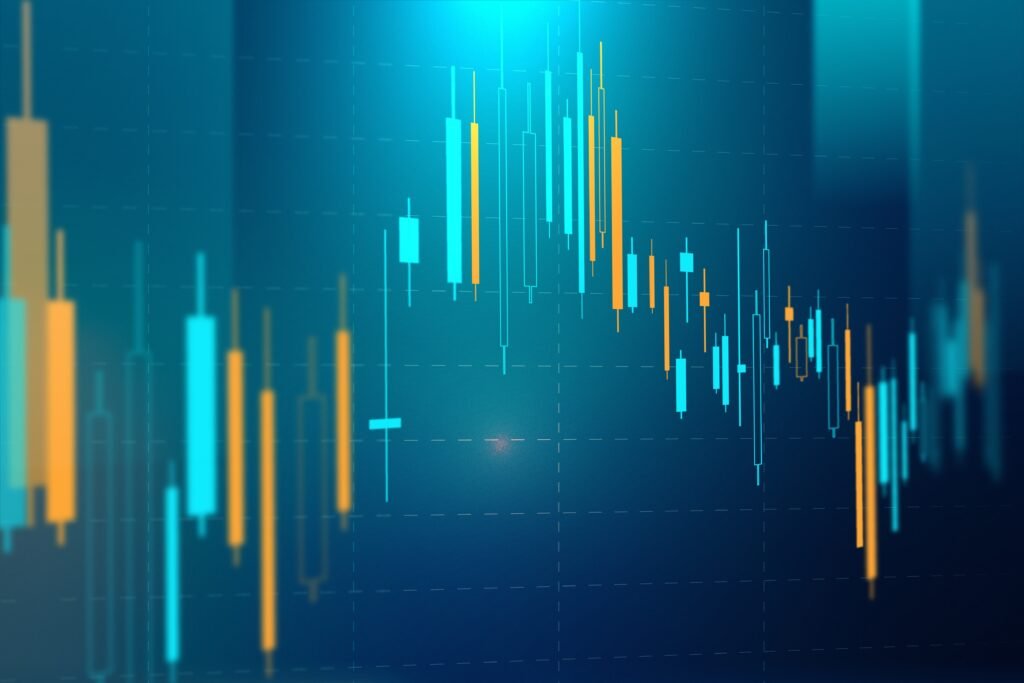In the rapidly evolving world of cryptocurrencies, understanding key metrics is crucial for anyone looking to navigate this digital frontier. Among these, “market capitalization” stands out as a fundamental concept. This article will demystify crypto market capitalization, exploring its meaning, significance, potential pitfalls, and how it fits into the broader financial landscape.
The Essence of Market Capitalization
Market capitalization, often shortened to “market cap,” represents the total value of all the circulating units of a particular cryptocurrency. It provides a quick snapshot of a crypto asset’s overall size and standing in the market.
The formula for cryptocurrency Market Capitalization (Crypto Market Cap) is straightforward:
Market Cap = Current Price of One Coin/Token × Circulating Supply
A Simple Analogy
Imagine a popular bakery that sells freshly baked cookies. Each cookie sells for €2. If the bakery has produced and sold 1,000 cookies, its “cookie market cap” would be €2,000 (€2 per cookie x 1,000 cookies). In this analogy, the “price” of a cookie is €2, and the “circulating supply” is 1,000 cookies. The total value of all cookies in circulation is its market cap.

A Financial Perspective
For those with a background in traditional finance, market capitalization in crypto is directly analogous to the market cap of a company listed on a stock exchange. It’s calculated by multiplying the current price of a single share by the total number of outstanding shares. For instance, if a company’s stock trades at €50 per share and there are 10 million shares outstanding, its market capitalization is €500 million (€50 x 10,000,000). Similarly, in crypto, if Bitcoin trades at €60,000 and there are approximately 19.7 million Bitcoins in circulation, its market cap is approximately €1.18 trillion (€60,000 x 19,700,000).
Is Crypto Market Capitalization a reliable Measure of Value?
While market capitalization (or Market Cap) is a critical indicator, it’s essential to understand its role and limitations when assessing a cryptocurrency’s value or potential.
The Indicator’s Utility
Market capitalization is an indicator of a crypto’s value in the sense that it reflects the current total monetary worth of all its circulating units. A higher crypto market cap generally suggests a larger, more established, and often more liquid asset. It helps in comparing the relative sizes of different cryptocurrencies. For example, Bitcoin, with its massive market cap, is seen as the dominant player in the crypto space, indicating its widespread adoption and perceived stability compared to newer, smaller altcoins.
Beyond Crypto Market Cap: A Holistic View
However, market capitalization alone is not a sufficient indicator of a crypto’s intrinsic value or its future potential. A high market cap doesn’t necessarily equate to a strong underlying project or guaranteed future growth.” “Value” in crypto, or “potential,” encompasses a broader range of factors, including:
- Technology and Innovation: The underlying blockchain technology, its scalability, security, and unique features.
- Use Case and Utility: The real-world problems the cryptocurrency aims to solve and its adoption in practical applications.
- Development Team and Community: The expertise and reputation of the project’s developers, and also the strength and engagement of its community.
- Roadmap and Milestones: The project’s future plans and its ability to achieve its stated goals.
- Tokenomics: The design of the token’s economic model, including its supply, distribution, and incentive mechanisms.
- Market Sentiment and Adoption: The overall perception of the crypto and its increasing use by individuals and institutions.

Market Capitalization: Potential for Misinterpretation
While market capitalization serves as a valuable indicator, its application can, at times, lead to misinterpretations, particularly within the dynamic cryptocurrency market.
The Illusion of Size
A high market capitalization does not always directly correlate with a project’s long-term viability or intrinsic value. This can occur when a limited circulating supply of an asset, combined with speculative trading, leads to an artificially elevated price. Such scenarios are more frequently observed in the context of newer or smaller projects, where the price may not yet reflect widespread adoption or established fundamental strength.
Consider a hypothetical “XYZ Coin” launched with a very small circulating supply of 100,000 tokens. If a small group of early investors or developers artificially inflate the token’s price to €100 each through coordinated buying, the reported market capitalization would reach €10 million (€100 x 100,000). However, if there’s no real utility or significant demand for XYZ Coin beyond this speculative activity, this market cap is an artificial reflection of value and is susceptible to a significant price decline once the initial speculative interest diminishes..
The Terra (LUNA) Event: A Case Study in Market Dynamics
The Terra (LUNA) ecosystem experienced a significant decline in May 2022, which illustrated how market capitalization, while generally useful, can sometimes present an incomplete picture. TerraUSD (UST), a stablecoin within this ecosystem, aimed to maintain parity with the US dollar through an algorithmic link to its companion token, LUNA. LUNA had achieved a substantial market capitalization, positioning it as a leading cryptocurrency.
However, a confluence of factors, including considerable withdrawals and insufficient reserves, led to UST losing its intended peg. The algorithmic mechanism intended to support the peg then entered a period of rapid LUNA token generation. This extensive minting of LUNA, in an attempt to restabilize UST, resulted in a precipitous drop in LUNA’s value and a near-total loss of its market capitalization. This event demonstrated that a high market capitalization, even for a project with significant visibility, does not inherently assure stability or immunity from inherent design vulnerabilities
You can primarily rely on market capitalization to gauge a cryptocurrency’s relative size and liquidity. Generally, a larger market cap indicates higher liquidity, making it easier to buy or sell the asset without drastically affecting its price. It also suggests a degree of market acceptance and investor confidence.
For example, when evaluating investment opportunities, comparing Bitcoin’s market cap to a micro-cap altcoin immediately highlights the significant difference in their market presence and established nature.
The Significance of Diluted Market Cap
The concept of “fully diluted market capitalization” adds another layer of insight for crypto investors.
Beyond Current Circulation
While standard market cap uses the circulating supply, fully diluted market cap (FDMC) considers the total supply of a cryptocurrency that will ever exist, including tokens currently locked, reserved for future distribution, or yet to be minted.
What it Reveals
FDMC provides a glimpse into the potential future valuation of a cryptocurrency if all its tokens were in circulation at the current price. This information is particularly useful for projects with significant portions of their supply not yet released.
Here’s how fully diluted market cap (FDMC) helps:
Understanding Inflationary Pressure: A large difference between the current market cap and FDMC can indicate significant future selling pressure if a large number of tokens are scheduled to be released, potentially diluting the value for existing holders.
Valuation Comparison: It allows for a more “apples-to-apples” comparison between projects that have different release schedules for their tokens. A project with a seemingly low current market cap but a very high Fully Diluted Market Cap (FDMC) might be considered “expensive” in the long run. This is because the FDMC accounts for all tokens that will ever be in circulation. If the price doesn’t grow proportionally to the increasing supply as more tokens are released, the market may dilute the value of existing tokens, effectively making the investment less attractive over time for the initial price paid.
Why Crypto Market Cap Matters for Investors
Understanding a cryptocurrency’s market cap is indeed important for anyone considering an investment or simply wanting to assess the cryptocurrency’s viability.
Gauging Stability and Potential

For an investor, market cap can be a quick filter. In general, we have:
- Large-Cap Cryptos (e.g., Bitcoin, Ethereum): These typically have market caps in the tens of billions or trillions. They are often considered more stable and less volatile due to their established networks, broader adoption, and deeper liquidity. While their growth potential might be slower than smaller projects, they are perceived as safer long-term investments. For example, Bitcoin’s massive market cap reflects its status as digital gold and its first-mover advantage, while Ethereum‘s large market cap is driven by its dominant smart contract platform.
- Mid-Cap Cryptos: These have market caps in the hundreds of millions to several billions. They represent projects that have gained some traction but still have significant growth potential. They can offer a balance between risk and reward.
- Small-Cap/Micro-Cap Cryptos: These have market caps ranging from a few million to hundreds of millions. They are often newer projects with high growth potential but also carry significantly higher risk due to their nascent stage, lower liquidity, and susceptibility to price manipulation.
Knowing the market cap helps an investor align their investment strategy with their risk tolerance. Someone seeking relative stability might favor large-cap cryptos, while an investor comfortable with higher risk might explore promising small-cap projects for potentially higher returns.
Interpreting Market Cap Movements
Changes in a cryptocurrency’s market cap often provide valuable insights into market sentiment and investment trends.
- Rising Market Cap: A steadily increasing market cap signifies growing investor interest, increasing demand, and often, rising price. It suggests that more capital is flowing into the asset, indicating increased confidence from the market. This can be due to positive news, technological advancements, or broader market bullishness.
- Falling Market Cap: Conversely, a decreasing market cap indicates selling pressure, decreasing demand, and usually a falling price. It suggests that capital is flowing out of the asset, reflecting diminishing confidence, negative news, or broader market bearishness.
To sum up, we can conclude that, a cryptocurrency’s market cap and investor confidence are directly linked. When the market cap is high or growing, it usually means more people are investing, and they feel good about the crypto’s future. They’re putting in more money because they believe in its value. On the flip side, a shrinking market cap indicates less investment and less confidence, as people pull their money out, worried about what’s next for the asset. So, the market cap is a crucial indicator of how people collectively feel about a crypto and how much money they’re willing to put into it.
Key Data Points Beyond the Formula
While the core formula for market cap is simple , several other supply-related terms are crucial for a comprehensive understanding.
We should remember that the market cap formula is the following:
Market Cap = Current Price × Circulating Supply
Insights into Supply Dynamics
- Circulating Supply: This refers to the number of cryptocurrency tokens that are publicly available and actively trading in the market. This is the figure used in the standard market capitalization calculation.
- Max Supply: This refers to the absolute maximum number of tokens that will ever exist for a particular cryptocurrency. Not all cryptocurrencies have a defined max supply. For example, Bitcoin has a hard cap of 21 million BTC, while Ethereum does not have a fixed max supply, as new Ether can be continually minted. This is the data used to calculate the fully diluted market cap (FDMC), which is the theoretical market capitalization of a cryptocurrency if all its possible tokens were in circulation at the current price. It offers a projection of the project’s maximum potential valuation, assuming full token issuance.
- Total Supply: This is the total number of tokens that have ever been created or minted, minus any tokens that have been verifiably burned (permanently removed from circulation). It includes tokens that are not yet in circulation (e.g., locked in smart contracts, held by the development team, or reserved for future releases). Crucially, for projects without a defined Max Supply, this ‘Total Supply’ is the figure used to calculate the fully diluted market cap.
These terms are important because they directly influence the potential for future inflation or deflation of a cryptocurrency’s supply, which in turn impacts its long-term value. A project with a fixed and limited max supply (like Bitcoin) creates scarcity, which can contribute to long-term value appreciation, assuming demand remains consistent or grows. Conversely, a project with an uncapped or highly inflationary total supply might face downward price pressure over time if demand doesn’t keep pace with the increasing supply.
Addressing Variations in Supply Models
Not all cryptocurrencies have a fixed maximum supply (a hard cap), and their total supply (current count of existing tokens) can be dynamic, increasing over time until a potential maximum is reached, or decreasing due to burning mechanisms, and consequently, not all will have a meaningful fully diluted market cap.
- Bitcoin vs. Ethereum: Bitcoin has a fixed max supply of 21 million BTC. This makes its fully diluted market cap a definitive future valuation if all Bitcoins were in circulation. Ethereum, on the other hand, does not have a fixed max supply. Its supply is determined by its monetary policy, which currently includes a mechanism to burn a portion of transaction fees, potentially leading to a deflationary effect in certain conditions. This difference means that Bitcoin’s future supply is entirely predictable, while Ethereum’s is dynamic. This inherent difference impacts their long-term economic models and how investors perceive their scarcity. For cryptocurrencies without a defined max supply, investors must instead focus on the inflation rate and the mechanisms controlling new token issuance.

Comparing Market Caps: A Powerful Tool
Comparing the market caps of different cryptocurrencies is a highly useful exercise.
Insights from Comparison
It helps in:
- Identifying Dominance: It clearly shows which cryptocurrencies dominate the market (e.g., Bitcoin’s continued market dominance).
- Assessing Relative Size: It provides a quick way to compare the scale of different projects, helping investors understand their relative established positions.
- Portfolio Diversification: It can guide diversification strategies, suggesting a balance between larger, more stable assets and smaller, higher-growth potential assets.
- Detecting Trends: Observing shifts in market cap rankings can indicate changing market sentiment and emerging trends.
The market capitalization of cryptocurrencies can be found on various crypto data aggregation websites, including CoinMarketCap, CoinGecko, and CryptoRank. These platforms offer real-time data, historical charts, and comprehensive information for thousands of cryptocurrencies. However, as a best practice for critical investment decisions, it’s always wise to cross-reference data across multiple sources.
Top Cryptocurrencies by Market Cap
As of June 2025, the cryptocurrencies with the largest market caps are typically:
- Bitcoin (BTC): Consistently holds the top spot as the largest cryptocurrency by market cap, often seen as digital gold and a store of value.
- Ethereum (ETH): The second-largest, known for its smart contract capabilities and the foundation for countless decentralized applications (dApps) and NFTs.
- Tether (USDT), USD Coin (USDC), and other Stablecoins: These stablecoins, pegged to the US dollar, often feature high market caps due to their role in facilitating trading and acting as a safe haven during market volatility.
- Binance Coin (BNB): The native token of the Binance exchange and BNB Chain, used for reduced trading fees and participation in the ecosystem.
- Solana (SOL): A high-performance blockchain known for its speed and scalability.
- XRP: Developed by Ripple, primarily used for fast and low-cost international payments.
Note: The rankings can fluctuate frequently based on market dynamics.
Ultimately, cryptocurrency market cap is a vital analytical tool, offering a panoramic view of an asset’s position within the volatile digital landscape. While it provides crucial insights into a cryptocurrency’s size and collective market sentiment, it should never be the sole determinant of an investment decision. A truly comprehensive approach blends market cap analysis with a deep dive into a project’s technology, use cases, and team. By embracing this multifaceted approach, investors can navigate the crypto market with greater confidence and make more informed decisions.

